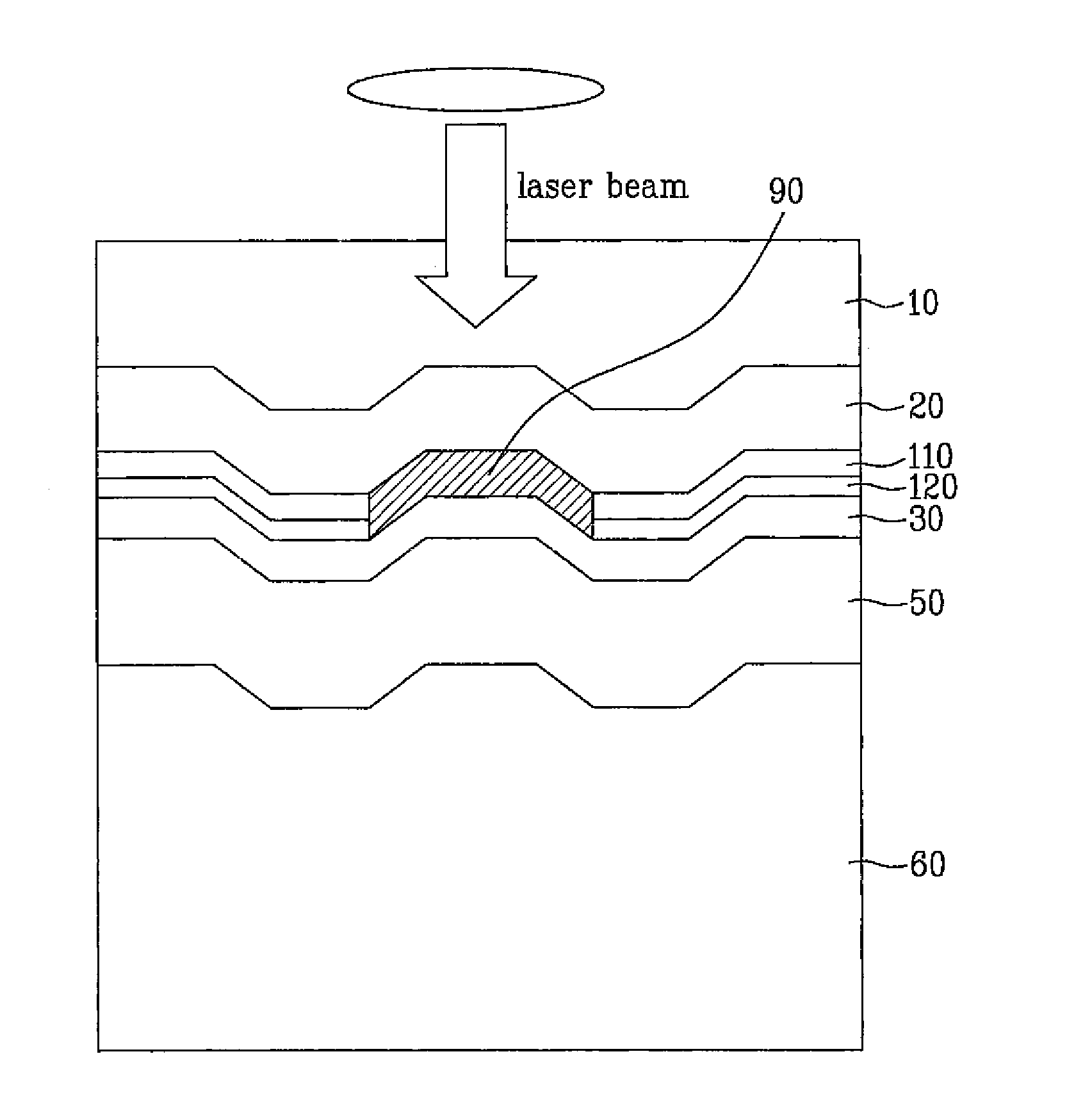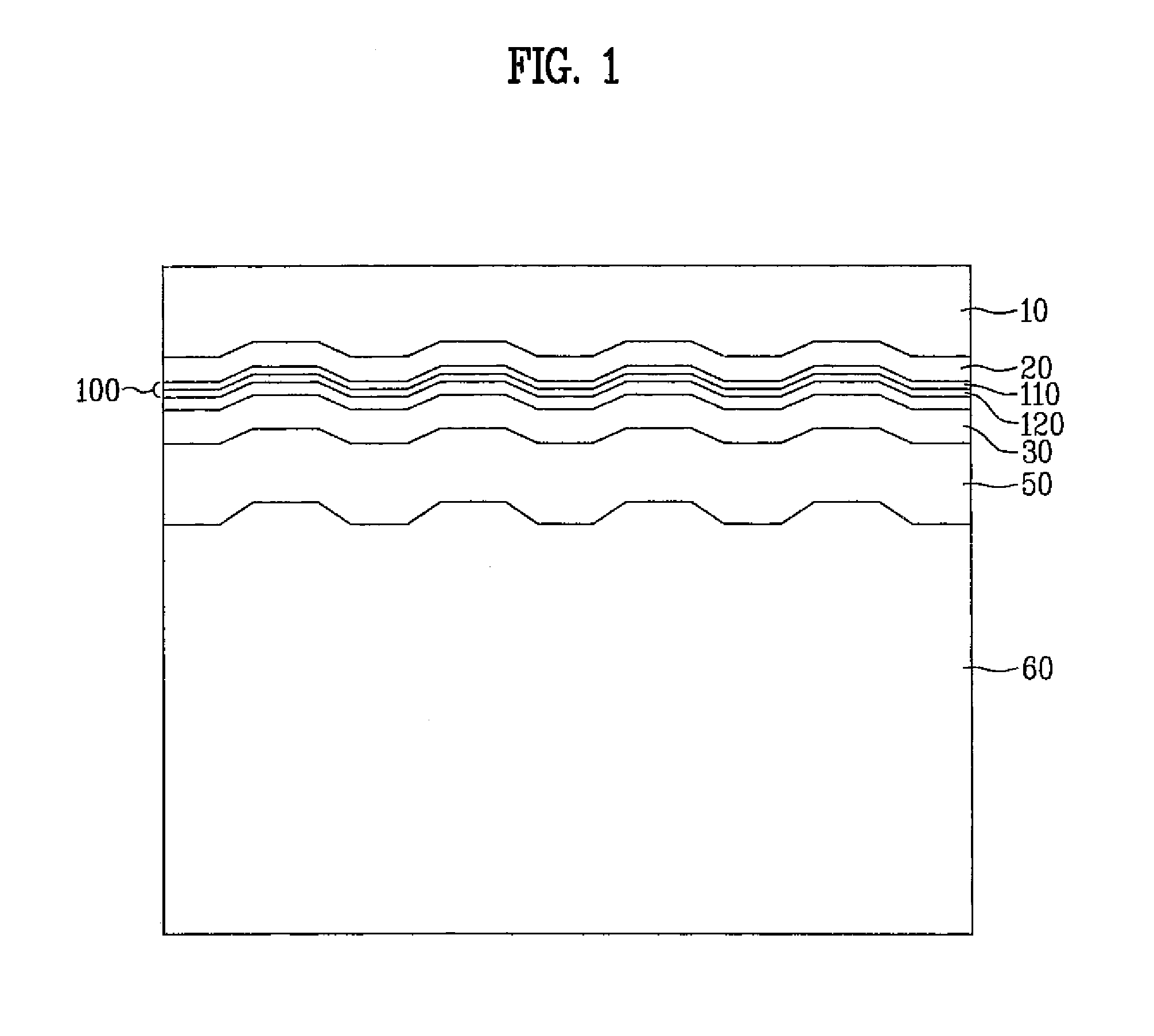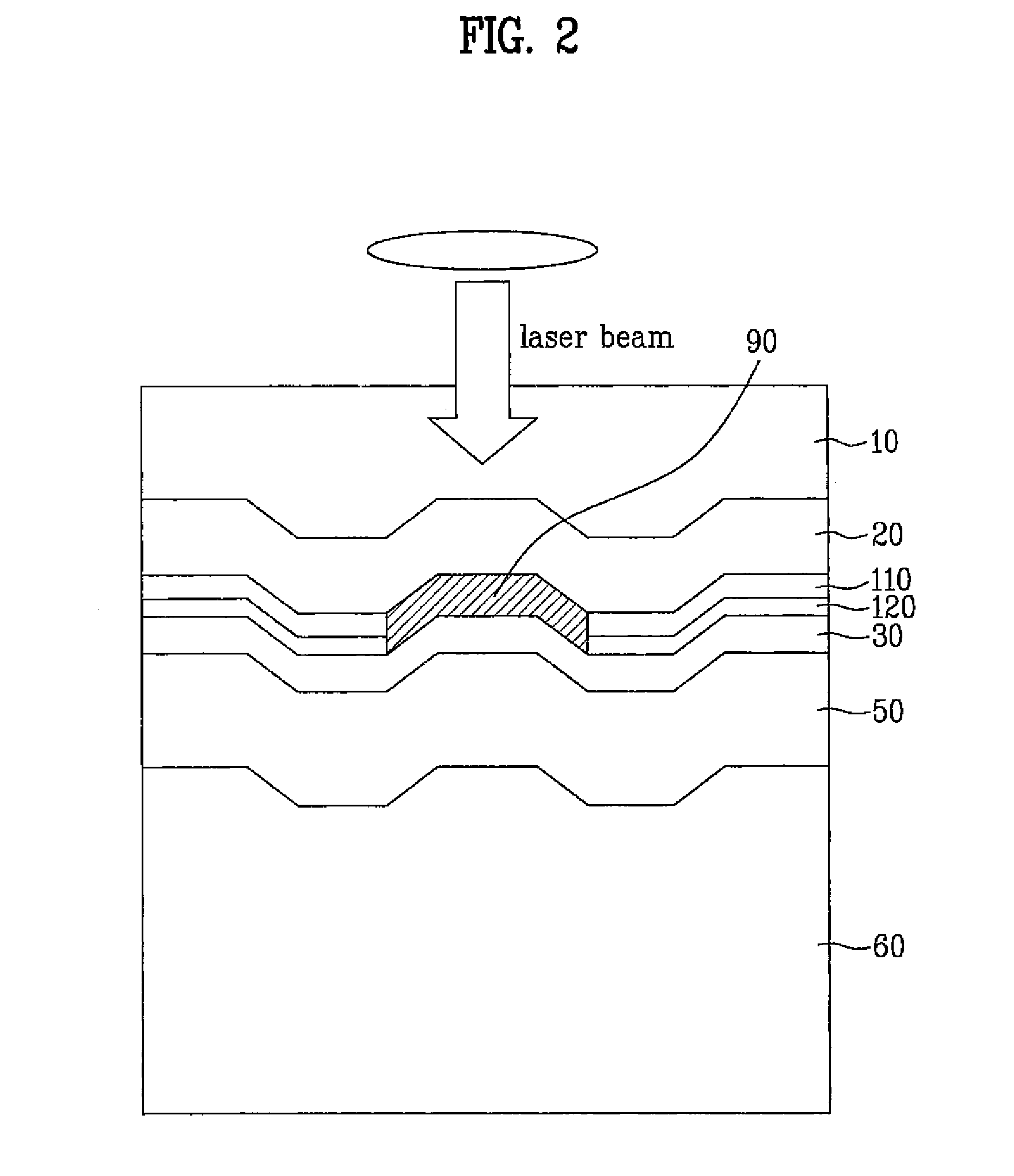Optical Recording Medium
a recording medium and optical technology, applied in mechanical recording, recording information storage, instruments, etc., can solve the problems that the data recorded in the optical medium may not last a long time, and achieve the effects of low melting point, low cost, and reduced laser power required to generate the recording mark
- Summary
- Abstract
- Description
- Claims
- Application Information
AI Technical Summary
Benefits of technology
Problems solved by technology
Method used
Image
Examples
Embodiment Construction
[0039]Reference will now be made in detail to the preferred embodiments of an optical recording medium of the present invention, examples of which are illustrated in the accompanying drawings.
[0040]Referring to FIG. 1, a structure of an optical recording medium according to a preferred embodiment of the present invention will be described as follows. The optical recording medium according to the preferred embodiment of the present invention includes a substrate 60, a reflective layer 50, and an information recording layer 100. Moreover, the optical recording medium preferably further includes an optical transmission layer 10 and dielectric layers 20 and 30. The information recording layer includes a first information recording layer 110 and a second information recording layer 120.
[0041]The substrate 60 supports a physical shape of the optical recording medium according to the preferred embodiment of the present invention. As the substrate 60, ceramic, glass, or resin is usually use...
PUM
| Property | Measurement | Unit |
|---|---|---|
| thickness | aaaaa | aaaaa |
| thickness | aaaaa | aaaaa |
| thickness | aaaaa | aaaaa |
Abstract
Description
Claims
Application Information
 Login to View More
Login to View More - R&D
- Intellectual Property
- Life Sciences
- Materials
- Tech Scout
- Unparalleled Data Quality
- Higher Quality Content
- 60% Fewer Hallucinations
Browse by: Latest US Patents, China's latest patents, Technical Efficacy Thesaurus, Application Domain, Technology Topic, Popular Technical Reports.
© 2025 PatSnap. All rights reserved.Legal|Privacy policy|Modern Slavery Act Transparency Statement|Sitemap|About US| Contact US: help@patsnap.com



